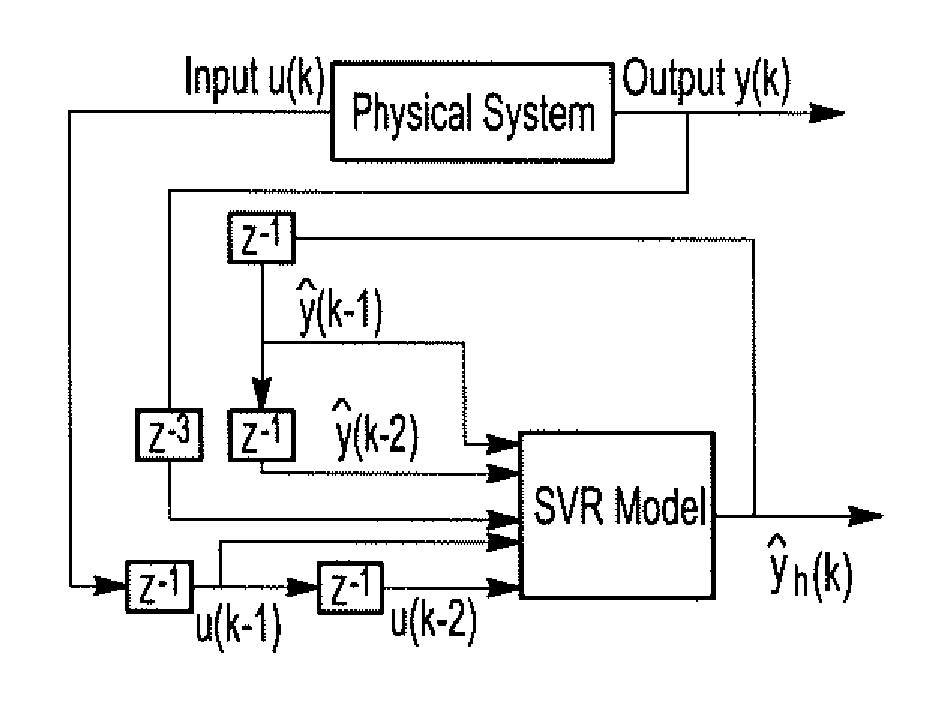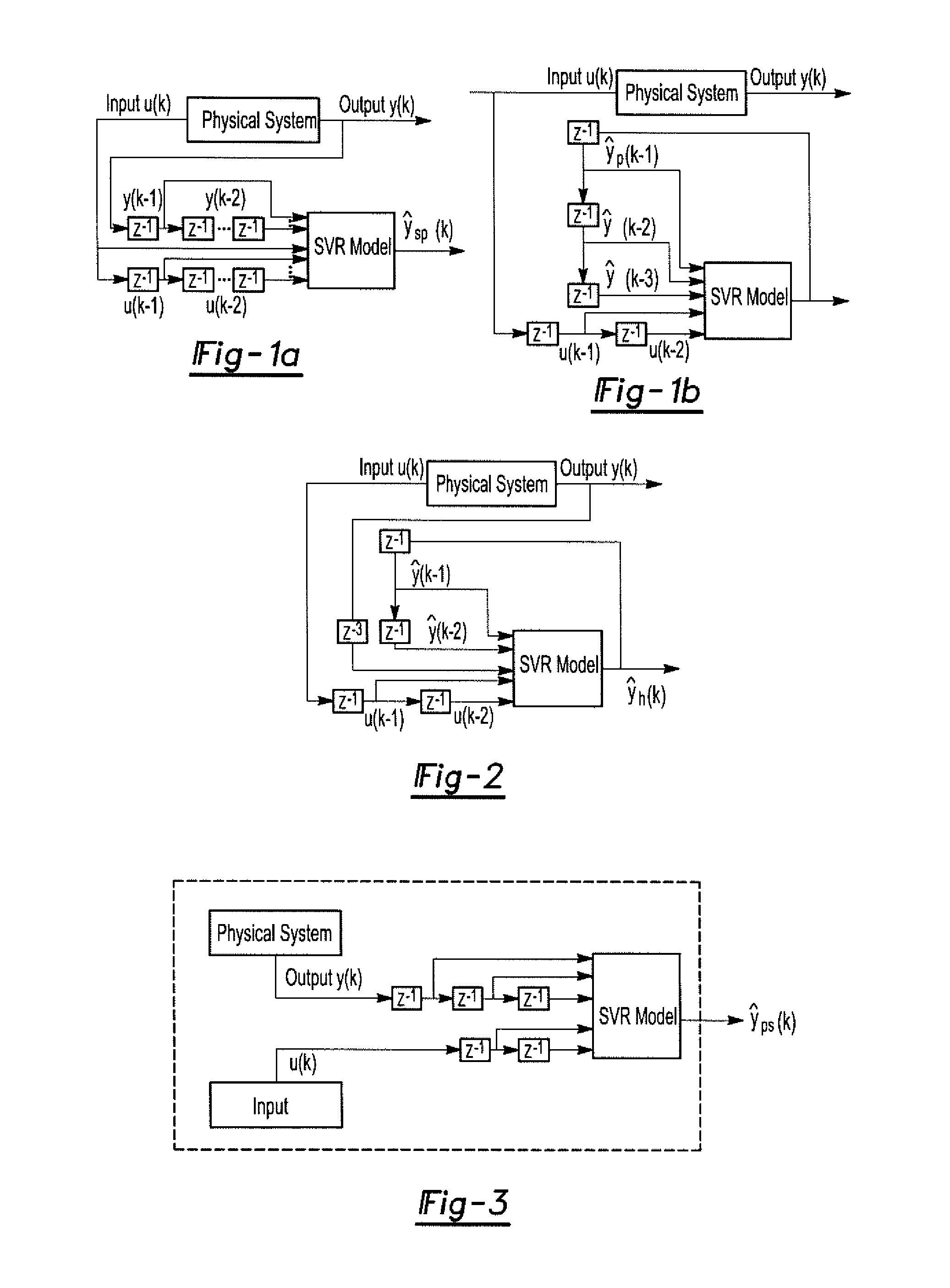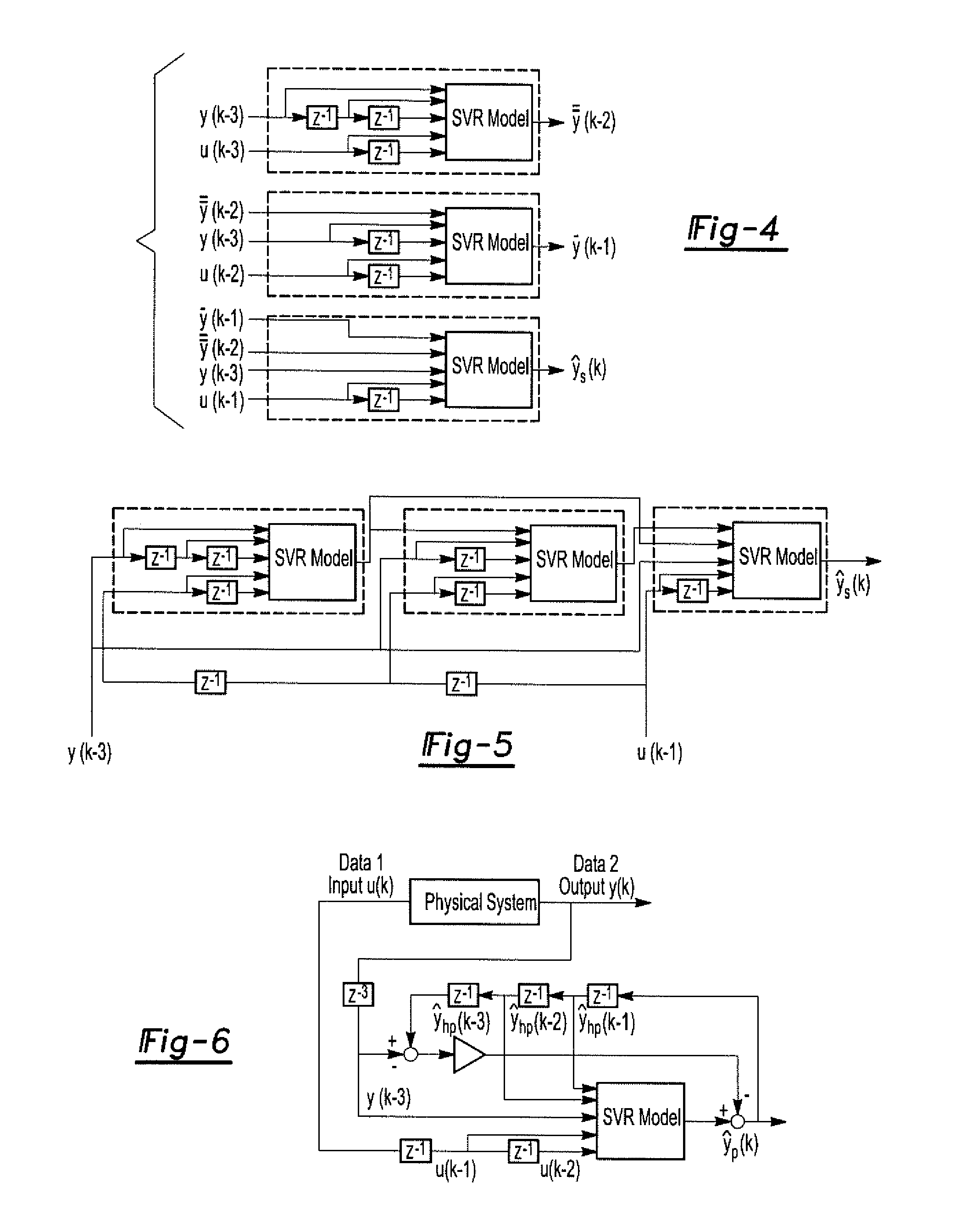Svr dynamic system modeling with delayed output measurements
- Summary
- Abstract
- Description
- Claims
- Application Information
AI Technical Summary
Benefits of technology
Problems solved by technology
Method used
Image
Examples
example 1
Hybrid Model with a Delayed Output Insertion
[0023]We will assume y(k) is measured, but is available only after some delay. Therefore, it is assumed that y(k−3) is available for the robot arm problem. Utilizing the series-parallel and parallel models shown in FIGS. 1A and 1B, one straightforward approach is to incorporate the measured output y(k−3) wherever ŷp(k−3) is needed in the parallel model. This embodiment is shown in FIG. 2. The model in FIG. 2 is the “direct hybrid” SVR model. The direct hybrid SVR model is expressed as
ŷh(k)=f(u(k−1),u(k−2),ŷh(k−1),ŷh(k−2),y(k−3)) (10)
The model above is straightforward and intuitive but is not a viable model and does not improve the parallel model performance. Analytically shown in Table 2 below a physical system can become unstable when it is turned into the model of the direct hybrid as shown in formula (10) above. The numerical case studies are summarized below in Table 2. Data from the various outputs and inputs are compared in order to...
example 2
Forward Prediction Using Stacked SVR Models
[0024]The present embodiment is based on stacking multiple series-parallel models. This model incorporates delayed SVR series-parallel structure as the submodels and uses a forward path to construct the information needed for output prediction, thereby avoiding the feedback loop in the parallel model providing for improved stability and prediction accuracy.
[0025]The stacked series-parallel model includes the series-parallel model as a building block. The series-parallel model is illustrated in FIG. 1A. The prediction of y(k) requires y(k−1), y(k−2) and y(k−3), but only y(k−3) is available. Rather than feeding back the model output for y(k−1) and y(k−2), the delayed input and output and the series-parallel model is used to construct the other signals to replace y(k−1) and y(k−2). The proposed stacked model is expressed in the form of
ŷs(k)=f(u(k−1),u(k−2), y(k−1), y(k−2),y(k−3)) (4a)
y(k−1)=f(u(k−2),u(k−3), y(k−2),y(k−3),y(k−4)) (4b)(11)
y(k−...
example 3
Hybrid SVR Model with Error Injection
[0027]An alternative embodiment and approach includes the injection of the delayed output y(k−3) and the corresponding measurable modeling error into the parallel model to mitigate the drawbacks of the parallel SVR model while avoids additional computation of the stacked SVR model discussed above.
[0028]Instead of the direct hybrid model as shown and discussed above and in formula (11), a hybrid model is utilized with an error injection in the form of
ŷhp(k)=f(u(k−1),u(k−2),ŷhp(k−1),ŷhp(k−2),y((k−3))−c*(ŷhp(k−3)−y(k−3)) (12)
where c*(ŷhp(k−3)−y(k−3)) is the extra term that injects the modeling error to the equation to help stabilize the model, and c is the design parameter that can be tuned for desired performance. A graphical and flowchart representation of the present model is illustrated in FIG. 6. Data from the various outputs and inputs are compared in order to achieve the most accurate models. Output data from the physical system is compared ...
PUM
 Login to View More
Login to View More Abstract
Description
Claims
Application Information
 Login to View More
Login to View More - R&D
- Intellectual Property
- Life Sciences
- Materials
- Tech Scout
- Unparalleled Data Quality
- Higher Quality Content
- 60% Fewer Hallucinations
Browse by: Latest US Patents, China's latest patents, Technical Efficacy Thesaurus, Application Domain, Technology Topic, Popular Technical Reports.
© 2025 PatSnap. All rights reserved.Legal|Privacy policy|Modern Slavery Act Transparency Statement|Sitemap|About US| Contact US: help@patsnap.com



